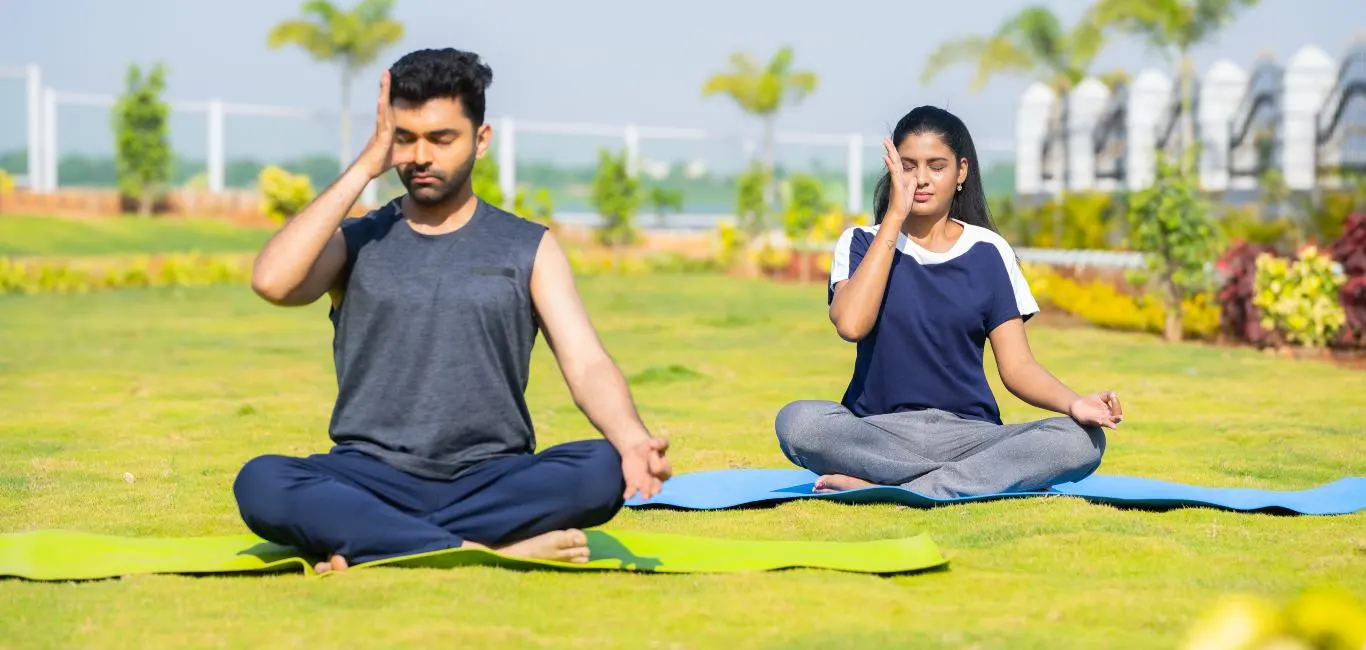Have you ever noticed how taking a deep breath can make you feel calm and focused?
That’s the magic of ” Pranayama “an ancient practice from India that focuses on controlling the breath for better health and well-being.
Pranayama is not just about the physical benefits – it’s also deeply connected to spiritual practices like yoga and meditation. By focusing on the breath, practitioners aim to create a sense of inner peace and harmony, connecting with their inner selves and the world around them.
In this blog, we will explore various aspects of Pranayama topics like 7 Types of Pranayama, Pranayama Steps, Pranayama Mantra, Pranayama Mudra, and understand the difference between Mudra and Types of Pranayama.
Contents
Meaning of Pranayama
Pranayama, a fundamental yoga practice, holds profound significance in the realm of holistic well-being. Rooted in ancient Indian traditions, Pranayama comprises two Sanskrit words: Prana(प्राण) signifying the vital life force energy, and Yama (यम ) representing control or regulation. Together, Pranayama embodies the conscious manipulation and regulation of breath to harness this life force energy within the body. Pranayama emerges as a transformative practice, offering profound insights into the interconnectedness of breath, energy, and consciousness within the framework of Kundalini Yoga chakras.
The Origins of Pranayama
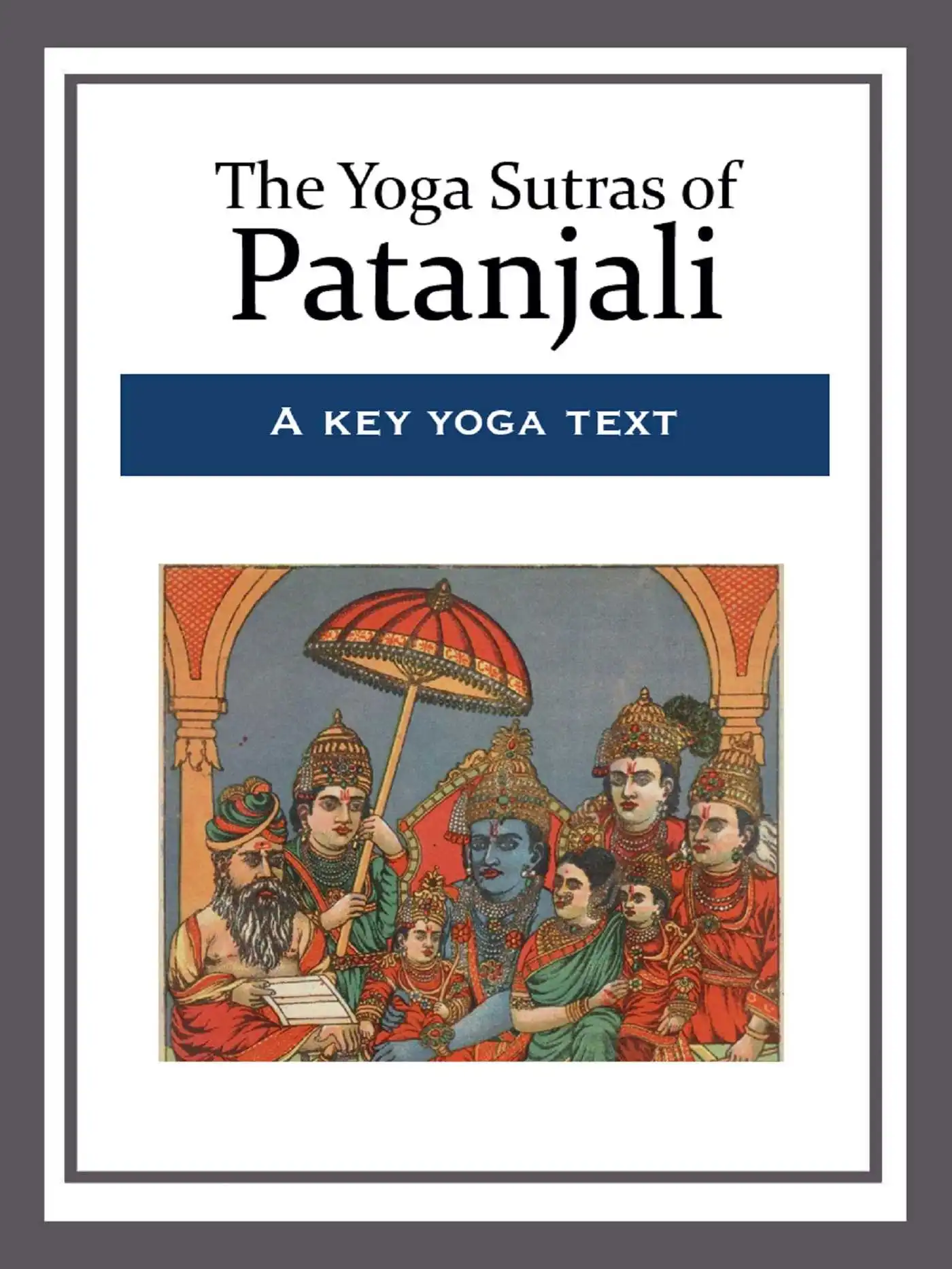
The history of Pranayama is as rich and diverse as the cultures that have practiced it over thousands of years.
Pranayama finds its origins in the ancient texts of yoga, particularly in the Yoga Sutras of Patanjali, which date back to around 200 BCE to 200 CE. These texts serve as a guidebook for living a fulfilling and purposeful life, and they mention Pranayama as a crucial aspect of yoga practice.
7 Types of Pranayama
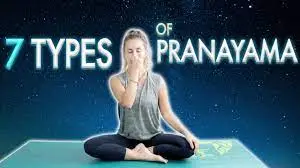
-
Shitali Pranayama:
- Shitali Pranayama is a cooling breath technique where you inhale through your rolled tongue or between your teeth.
- This practice is beneficial for reducing body heat, calming the mind, and releasing stress and tension.
- It’s particularly helpful during hot weather or when experiencing feelings of anger or frustration.
-
Bhastrika Pranayama:
- Bhastrika Pranayama, also known as Bellows Breath, involves rapid and forceful inhalations and exhalations through the nose.
- This technique increases oxygen supply to the body, boosts energy levels, and enhances mental clarity and focus.
- It’s considered an energizing and invigorating practice, similar to stoking a fire with a bellows.
-
Nadi Shodhan Pranayama:
- Nadi Shodhan Pranayama, or Alternate Nostril Breathing, is a balancing breath technique where you alternate inhaling and exhaling through each nostril.
- This practice helps balance the left and right hemispheres of the brain, harmonizes the flow of energy in the body, and promotes relaxation and mental clarity.
- It’s often used as a preparatory practice for meditation and to alleviate stress and anxiety.
-
Sheetkari Pranayama:
- Sheetkari Pranayama involves inhaling through the mouth while keeping the tongue against the roof of the mouth, with the teeth clenched and lips parted, followed by a slow exhalation through the nose.
- This technique has a cooling and calming effect on the body and mind, reducing stress and inducing relaxation.
- It’s particularly beneficial for calming the nervous system and reducing agitation.
-
Ujjayi Pranayama:
- Ujjayi Pranayama, or Victorious Breath, involves inhaling and exhaling through the nose while slightly constricting the back of the throat, creating a soft, audible sound like ocean waves.
- This technique helps build internal heat, improves concentration, and enhances the flow of prana (life force energy) in the body.
- It’s commonly used in yoga practice to synchronize breath with movement and deepen the meditative aspect of the practice.
-
Kumbhaka Pranayama:
- Kumbhaka Pranayama, or Breath Retention, involves holding the breath after inhalation (Antara Kumbhaka) or after exhalation (Bahya Kumbhaka) for a specific duration.
- This practice increases lung capacity, strengthens respiratory muscles, and enhances overall breath control.
- It’s often incorporated into advanced Pranayama practices and should be approached with caution under the guidance of a qualified instructor.
-
Kapalabhati Pranayama
- This dynamic breathing technique involves rapid and forceful exhalations followed by passive inhalations.
- The practice is characterized by short, sharp bursts of breath expelled through the nose.
- Kapalabhati translates to “skull-shining breath” or “forehead-shining breath” in Sanskrit.
This is also Interesting to read about, The Psychology of Gambling: Why People Bet
Pranayama mudra
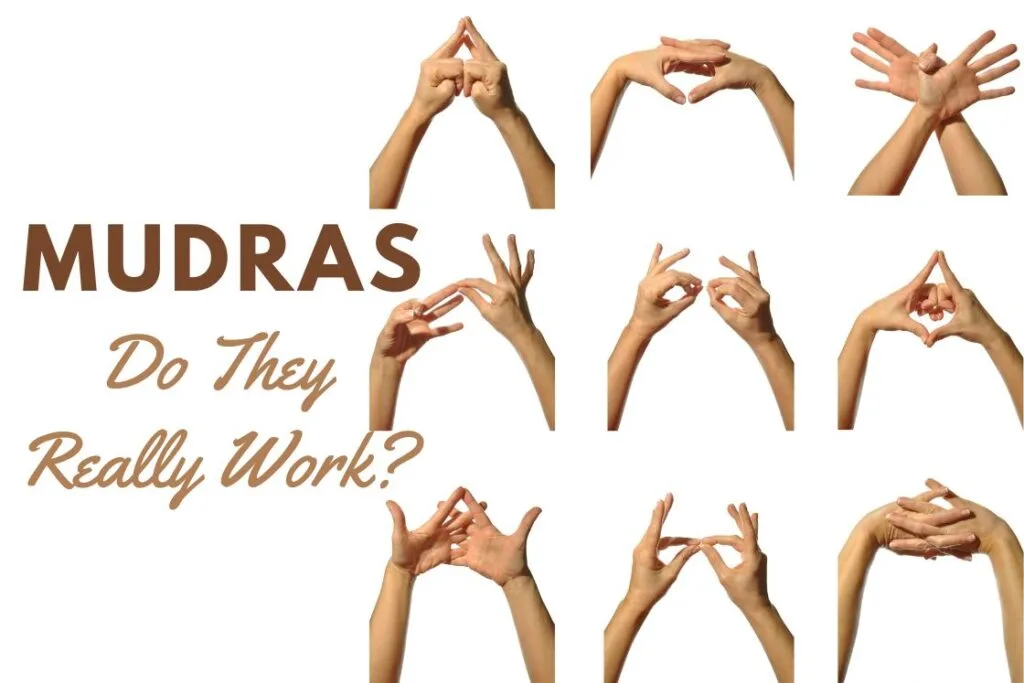
-
Anjali Mudra (Salutation Seal):
This mudra involves pressing the palms together in front of the chest, with fingers pointing upwards. It’s commonly used at the beginning and end of yoga sessions as a gesture of respect and gratitude.
-
Bhramara Mudra (Bee Gesture):
With this mudra, the index fingers are placed gently on the closed eyelids, while the remaining fingers lightly rest on the forehead. It’s often used during Pranayama to promote calmness and inner focus.
-
Nasika Mudra (Nose Gesture):
In this mudra, the thumb and index finger are lightly pressed against the sides of the nose, just below the bridge. It’s believed to help regulate the breath and enhance awareness of the inhalation and exhalation process.
-
Chin Mudra (Consciousness Gesture):
Chin Mudra is formed by touching the tip of the index finger to the tip of the thumb, with the remaining fingers extended but relaxed. This mudra symbolizes the unity of individual consciousness with universal consciousness and is often used during meditation and Pranayama to deepen awareness.
-
Adi Mudra (First Gesture):
Adi Mudra is formed by curling the fingers into a fist with the thumbs resting on top, pressing gently. This mudra promotes relaxation, grounding, and inner stability, making it beneficial for Pranayama practice.
-
Vishnu Mudra (Vishnu’s Gesture):
In this mudra, the index and middle fingers are folded into the palm, while the thumb, ring finger, and little finger remain extended. It’s thought to balance the body’s energy flow and is often used during Pranayama to regulate the breath.
Difference Between Mudra and Types of Pranayama
| Aspect | Pranayama Mudra | Types of Pranayama |
| Definition | Hand gestures or seals used in yoga | Breathing exercises aimed at controlling the breath |
| Purpose | Facilitate energy flow, enhance focus | Regulate breath, achieve specific effects on body and mind |
| Examples | Anjali Mudra, Chin Mudra, Gyan Mudra | Ujjayi Pranayama, Bhramari Pranayama, Kapalabhati |
| Technique | Hand positioning, finger placement | Specific patterns of inhalation, exhalation, breath retention |
| Benefits | Promote concentration, balance energy | Increase energy, calm mind, balance nervous system |
| Application | Used during yoga, meditation practices | Integrated into yoga routines, meditation sessions |
Benefits of Pranayama
- Enhanced Mental Clarity: Pranayama techniques such as Ujjayi Pranayama can improve focus and concentration, leading to greater mental clarity and alertness.
- Balanced Energy Levels: Pranayama helps regulate the flow of prana (vital energy) throughout the body, promoting a balanced and harmonious state of being.
- Increased Vitality: Regular practice of Pranayama revitalizes the body and mind, boosting energy levels and promoting a sense of vitality and well-being.
- Strengthened Immune System: By reducing stress and improving overall health, Pranayama can enhance the body’s immune response, making it more resilient to illness and disease.
- Emotional Regulation: Pranayama techniques such as Nadi Shodhana (Alternate Nostril Breathing) can help balance emotions and promote emotional stability and resilience.
- Detoxification: Deep breathing techniques in Pranayama facilitate the removal of toxins and impurities from the body, supporting detoxification and purification processes.
Pranayama Mantra:
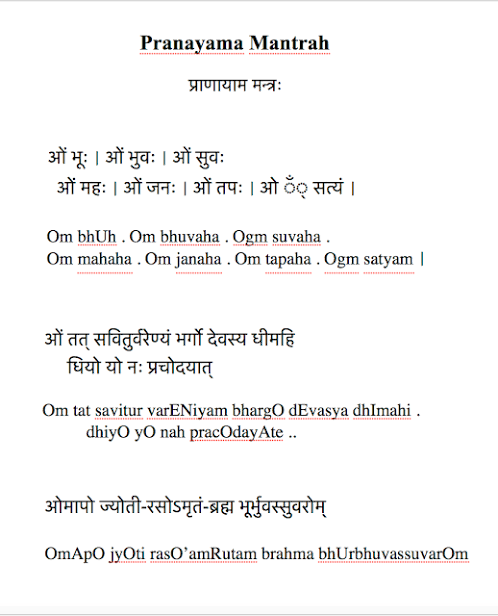
Pranayama Mantra is a sacred phrase or sound used during Pranayama practice to enhance focus, concentration, and spiritual connection
- “So Ham” (सो ऽहम्) : This mantra translates to “I am That” or “I am the Universe.” It helps align the practitioner’s consciousness with the universal energy.
- “AUM” (ॐ): AUM is considered the universal sound of creation. Chanting AUM during Pranayama can help connect with the divine and unify the mind, body, and spirit.
- “Ham Sa” (हं सः): This mantra represents the natural sound of the breath: “Ham” on inhalation and “Sa” on exhalation. It harmonizes the breath with the mantra, promoting inner stillness and awareness.
- “Om Namah Shivaya” (ॐ नमः शिवाय): This mantra is a salutation to Lord Shiva and invokes his divine energy. Chanting Om Namah Shivaya during Pranayama can help purify the mind and awaken spiritual consciousness.
- “Gayatri Mantra” (गायत्री मंत्र): The Gayatri Mantra is a powerful Vedic chant that invokes the divine light and wisdom. It is often chanted to invoke the blessings of the sun god for enlightenment and guidance.
Conclusion
In conclusion, Pranayama, the ancient practice from India, offers profound benefits for physical health and spiritual well-being.we have delved into essential aspects of Pranayama, ensuring a thorough understanding of key topics such as 7 types of Pranayama Pranayama Mantra, Pranayama Mudra, and discerning the differences between Mudra and Types of Pranayama. By exploring these topics, readers gain valuable insights into the diverse dimensions of breathwork, empowering them to enhance their practice and deepen their spiritual journey.
